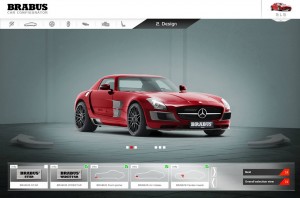Looking forward to a career in marketing, I knew coming in to the UBC MBA program that I needed to focus on areas that would be most relevant to me post-graduation. I have extensive experience working in marketing for a traditional automotive company which is only just beginning to realize the benefits of an online marketing strategy. So throughout the program I’ve tried to find classes that would help me learn the basics of using technology in marketing, and even interned in a software-as-a-service (SaaS) company over the summer in Vancouver to gain knowledge first-hand. So while looking at the available courses in the last period, I jumped at the chance to take eMarketing since the course summary outlined the very things I was looking for, and having just completed it I can honestly say that it did not disappoint.
Expectations
To be honest, I started this class at a very elementary level of knowledge about the subject. While I had heard a lot about tools like Hootsuite and Google Analytics, I had no working knowledge of them. The only electronic marketing that I had some understanding of were email campaigns, online presence through company websites, and company Facebook pages. So I was looking forward to learning about these topics as well as understanding how they fit into the traditional marketing methods.
Learning Takeaways
Looking back at the course now, I feel there were three main takeaways for me personally. The first was grasping the big picture of the course – whether it was understanding what tools to use, how they fit into a traditional marketing plan, and what resources to utilize to deepen my understanding of the subject matter.
The second learning takeaway was the hard skills the course taught us, especially in terms of learning how to use the individual tools that we were exposed to. Specifically, I would say Hootsuite was a complete revelation to me. While I had heard of it and the many advantages that it brought to monitoring an online presence, the fact that we were able to use it in our final project and get a chance to get certified for free was a massive bonus. In addition, some of the other technical knowledge that I found extremely useful to be exposed to was understanding how to monitor a Facebook page for a client through the in-built analytics on the site, and the many little tidbits of helpful information spread throughout the classes such as knowing that one Google + “Plus” is equal to four Facebook “Likes” in determining the visibility of a particular site on Google’s search engine algorithm.
And the third takeaway was in learning how to prepare an online marketing plan and implementing it for a real client. Sadly, I was not able to get the most out of this exercise since my group had an issue with our client which I will discuss below. But on the whole, understanding the steps that go into making an online marketing plan was a major personal learning takeaway for me from this course.
Client Project
We had originally planned on conducting an eMarketing campaign for a local area bar but due to the reluctance of the management we spoke to and the lack of time we decided on conducting a campaign for a San Francisco-based online professional network for technical professionals of the animation and motion picture industry named Zerply that one of our group members had a personal connection with. Unfortunately we faced an issue here too late in the process with our original point of contact passing over communication to another individual who was not as enthusiastic as the first and stopped us from posting on their behalf.
Our project thus had a number of issues that prevented us from taking advantage of this exercise. Even so, there were a number of lessons that we learnt from this experience, both in terms of the actual deliverables and the team experience. Based on our analysis, we correctly identified that Zerply was not making optimum use of certain channels such as Facebook and LinkedIn. Zerply’s Facebook page is very attractive but is not updated frequently causing a systematic drop in views and “likes” on its page. On the other hand, Zerply does not even have a LinkedIn page – while it is a niche professional network itself, we feel that having a page on LinkedIn would not hurt as there would be many potential users on the site that it could attract if marketed properly.

In terms of the team experience, we also faced a number of issues. We had some communication issues and this caused a lot of additional delays. In particular, my own portion of the project was preparing the content calendar. As I learnt in the class where we broke up into groups based on our portions of the project, other content calendar makers faced some of the same issues that I did, and we all agreed on lack of teamwork and communication being the single biggest drawback of preparing one. Since the content calendar is the first step of the project, it requires the entire team to be on the same page and to contribute their thoughts on when certain actions need to be taken. Unfortunately this was not the case in our group and I feel that this affected the project moving forward.
Conclusion
On the whole, I have mixed feelings about the course. While I gained an incredible amount of knowledge that I’m sure will help me in my career, the issues we faced in our group project and the short duration of the course did not allow me to fully utilize it as a practical tool to implement that knowledge. But other than the issues we faced in our final project, taking this course was a great decision and I look forward to using my new-found knowledge in the real world.
